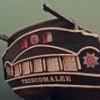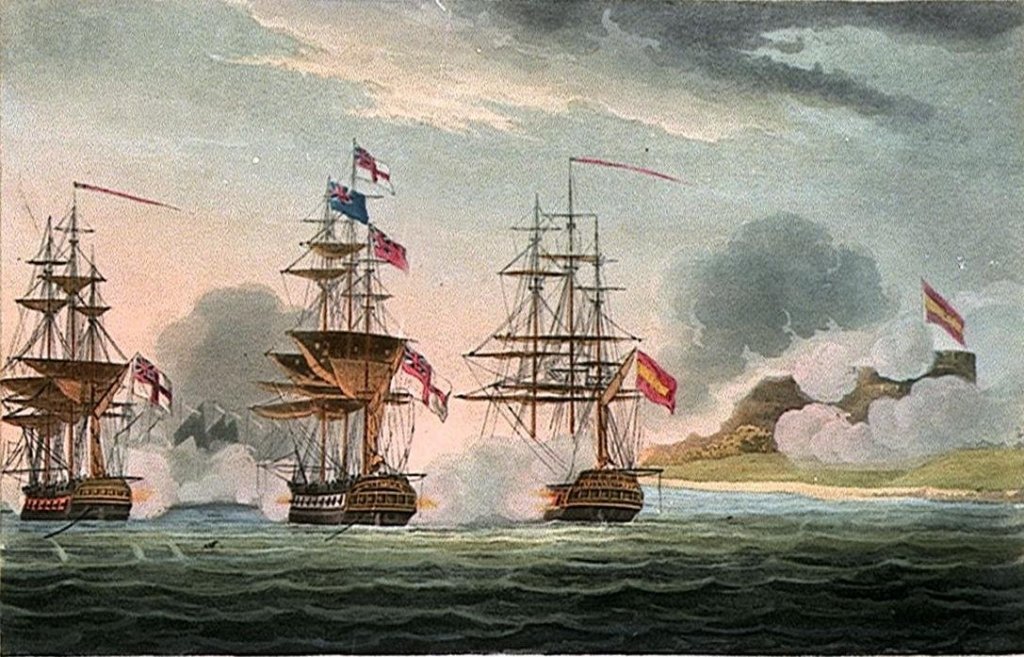-
Posts
546 -
Joined
-
Last visited
Content Type
Profiles
Forums
Gallery
Events
Everything posted by Morgan
-
Dafi, If you wanted to pin it down there are The National Archives, under ADM 160 (and sub-divisions) Ordnance Office, but it would be a hell of a search through the letters sections unfortunately, there seems to be no single returns book as there was from 1803 onwards. Chances are that most of the guns stayed with her from refit to refit as they were set aside when taken out, so the 32 Pounders are probably the same ones from 1788 onwards through to Trafalgar and beyond. They were all made by Walker & Co.. The reference I mentioned earlier I would look for was from ARMING THE ROYAL NAVY, 1793-1815: THE OFFICE OF ORDNANCE AND THE STATE by Gareth Cole, he states “Victory herself appears to have been armed with old pattern cannon” and then provides the reference “An Account of Iron Ordnance on Board of His Majesty's Ship Victory, Chatham. 28th April 1803', TNA ADM 160/ 154. Although, it is not known if these were replaced in the summer of 1805 while she was at Portsmouth”. We know from the 1803 and 1807 returns (the ones I sent you) that they were the same throughout, so we know they were iron, and probably date to at least 1788. If these were the old pattern guns, probably Armstrong, they may have stayed until the refit in the 1810’s. A comparison with Armstrong / Bloomfield pattern guns and those on the deck lower deck of the Victory would tell you which ones they actually were if you want to go that deep into it. Gary
-
Also, and I have to re-find the reference, he mentions that prior to the 1800 refit the 32 Pounders were of the old type, by which I presume he means the pattern that preceded the Blomfeld, in which case there would be a noticeable difference on your dummy barrels muzzle swell. He also thinks they may have been on at Trafalgar but we know this is not the case as we can trace them to 1803 and some remain on board. Gary
-
Hi Dafi, Concerning bronze cannon Bugler at page 21 says “It is also interesting to note that by 1790 all brass ordnance had been succeeded by cast iron throughout the Navy and it is very likely that the last remaining brass ordnance in the Victory was discarded during this repair (1788)”. Not definitive but opens the possibility of brass cannon up to this point. Gary
-

HMS Winchelsea - Special Offer
Morgan replied to kurtvd19's topic in NAUTICAL RESEARCH GUILD - News & Information
Jeff is right, that’s what I did. You will then get a follow-up email. Gary -
A 3D laser scan of the Victory has been done, visit the official HMS Victory website and look under the Restoration section. There is also this BBC News article: https://www.bbc.co.uk/news/uk-england-hampshire-22789106 Gary
-
Reckon I’ll take the plunge, this will use the full range of Chuck’s bulkheads and fittings, but as I have some hefty English Boxwood logs and a large quantity of Pear I’ll mill my own lumber, I also have some Ebony I’ll throw in as well. I’ve taken Advantage of the NRG 2 years renewal offer as well, so I’m signed up for a while now, perhaps even longer enough to build the base board 😁 Gary
-
Chris, Come me at it from another direction to corroborate the 7 window theory in the absence of direct evidence. Anson was ‘cut-down’ at the same time, as was Magnanime and Indie. As a 64 Anson had 8 lower windows, but paintings show 7 - see below left hand ship (capture of Pomona of Havana by Thomas Whitcombe). The rationale would have been to have a razee look like a frigate, and 8 windows were a give-away that it was a razee which would be avoided, you wanted the enemy to see a lesser ship of force. Other instances would assist in the provenance of the 7 window proposition. Gary
-
Books can be addictive, over 250 at the last count excluding periodicals and naval fiction (all mainly around the Revolutionary and Napoleonic wars period) thankfully after retiring I binned all work related books so still have some room to expand - although the wife may have other ideas. The Imperieuse would make a great subject, the Spanish hullform would distinguish it from other frigates on the market, plus the historical prominence in naval literature helps with the attraction to it as a subject. Gary
-
Chris, Mindful of the 'viewer beware' caveat, have you seen the image below? It is a little naive, but does show 7 stern windows. This is from RMG collections PAD5498, it does capture the fact that the captains accommodation was on the quarterdeck so has some basis in fact rather than just a generic frigate. Not sure about the decoration though, it looks too ornate for the times. Also, and again you may have seen this, Robert Gardiner's book Frigates of the Napoleonic Wars gives a good account of how Pellew influenced the fit-out of the ship that varies from the drafts, such as ordnance, captains accommodation (foreshortening) and rig (64-gun ship). Gary
-
Having spent a lot of time, money and the Admirals patience in researching what ships actually looked like I would be hesitant to rely on late 18th / early 19th century paintings. As you say many were not actually contemporary, and often generic. Some used Admiralty models as a basis, but these were not often ‘As-built’ but merely indicative with details such as actual decoration / carvings being decided upon at a later date, unless included on the Admiralty plans. What I believe can be relied upon are Admiralty records and plans, and also contemporary artists preliminary sketches, where they still exist as these were the best eye witness accounts, but are difficult to come by. Often the paintings derived from these sketches changed the subject significantly to conform with Georgian allegorical ideals as demanded by their patrons, so indeed “viewer beware”. Gary
-
I would hesitate to trust Pocock he consistently painted Victory after her 1803 refit, yet with her original stern which disappeared during that refit, despite having seen the ship for himself and having sketched her re-modelled stern, he liked to ‘bling-up’ his ships. Wylie had similar faults and was painting 100 years after the event. Some of the latest research is captured here https://julianstockwin.com/2017/10/10/agamemnon-the-darch-model/ Even this though shows 8 lower windows, it has some research provenance from what should be reliable sources. Gary
-
I’d like to see Bellona at 1:64, I’m also up for a full Amati Victory kit rather than instalments when released - tomorrow would be fine only if ☹️ Gary
-
Perhaps you could share how you go about clinker planking for those of us on the forum who have never attempted this. Gary
- 335 replies
-
- alert
- vanguard models
-
(and 1 more)
Tagged with:
-

Can you identify this feature? 19th century 1st Rates
Morgan replied to Martocticvs's topic in Nautical/Naval History
Interesting they aren’t on the other decks, which makes me wonder, normally upper deck under the forecastle was the location of the sick berth, so whether ventilation (rather than have the adjacent bridle or chase ports open which would be difficult in any rough weather / seas) or pissdales were they associated with the sick berth? Gary -
I’ll keep watching, it may inspire me to dust off a half complete DoY I have sat in a box in the study. Nice work, keep going 😊 Gary
- 24 replies
-
- pontos
- king george v class
-
(and 5 more)
Tagged with:
-
I’ve had no problem with the Limewood parts (17/18/19), as suggested by Chris I fitted them to frame 10 before fitting frame 10 to the longitudinal frame, immediately on gluing them to frame 10 I immediately installed frame 10, with parts 17/18/19 fitting nicely in to the slots on frame 9. I’m not sure that at this scale if they are made of MDF they will be any stronger. Gary
-
Hi BE, Enjoy Staithes, if you haven’t done so before look in to the Captain Cook museum in Staithes, also I’d recommend Panart Park Museum down the road at Whitby they have some nice Napoleonic bone warship models as well as a good whaling section. Gary
- 335 replies
-
- alert
- vanguard models
-
(and 1 more)
Tagged with:
-
That’s great, I hope you are a quick builder - there are quite a few of us champing at the bit😉. Gary
-
So does this provide a guideline for the kit general release date? I take it you have been in contact with Amati. Gary
-

Blackening the guns?
Morgan replied to dafi's topic in Discussion for a Ship's Deck Furniture, Guns, boats and other Fittings
I can’t remember where but I recall reading that varnish was mixed with chimney soot to produce a black paint that was applied to the guns and metal work in order to provide a semi-gloss finish, as opposed to the navy board supplied paint which was a dull colour. Gary -
Ordered the Alert on Saturday, delivered today at lunchtime, great service. Also, the external sleeve is really substantial so no damage. I also like the internal packaging which unlike other manufacturers fills the box helping to protect the material and fittings in transit. Well done Chris. So what’s this ‘new third’ kit your teasing? Gary
About us
Modelshipworld - Advancing Ship Modeling through Research
SSL Secured
Your security is important for us so this Website is SSL-Secured
NRG Mailing Address
Nautical Research Guild
237 South Lincoln Street
Westmont IL, 60559-1917
Model Ship World ® and the MSW logo are Registered Trademarks, and belong to the Nautical Research Guild (United States Patent and Trademark Office: No. 6,929,264 & No. 6,929,274, registered Dec. 20, 2022)
Helpful Links
About the NRG
If you enjoy building ship models that are historically accurate as well as beautiful, then The Nautical Research Guild (NRG) is just right for you.
The Guild is a non-profit educational organization whose mission is to “Advance Ship Modeling Through Research”. We provide support to our members in their efforts to raise the quality of their model ships.
The Nautical Research Guild has published our world-renowned quarterly magazine, The Nautical Research Journal, since 1955. The pages of the Journal are full of articles by accomplished ship modelers who show you how they create those exquisite details on their models, and by maritime historians who show you the correct details to build. The Journal is available in both print and digital editions. Go to the NRG web site (www.thenrg.org) to download a complimentary digital copy of the Journal. The NRG also publishes plan sets, books and compilations of back issues of the Journal and the former Ships in Scale and Model Ship Builder magazines.



